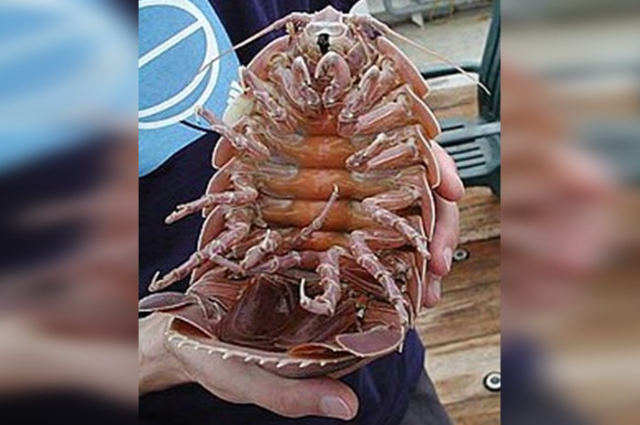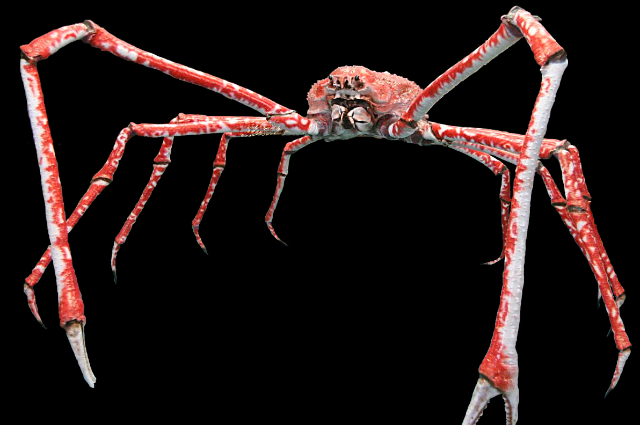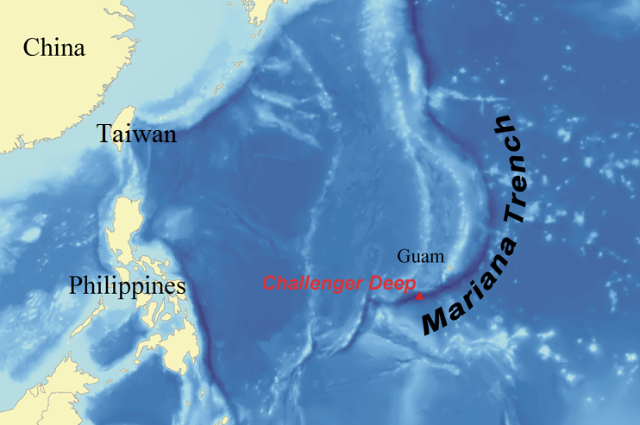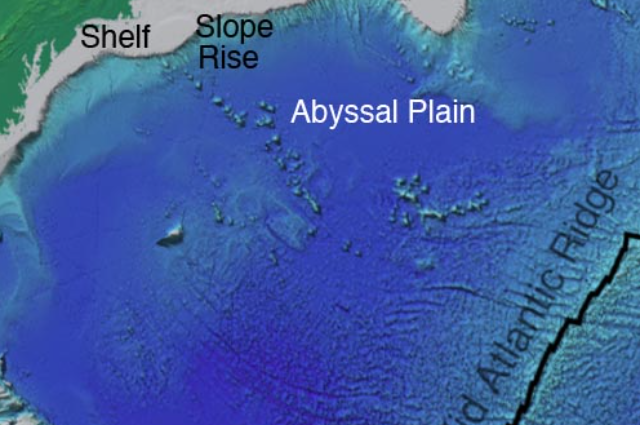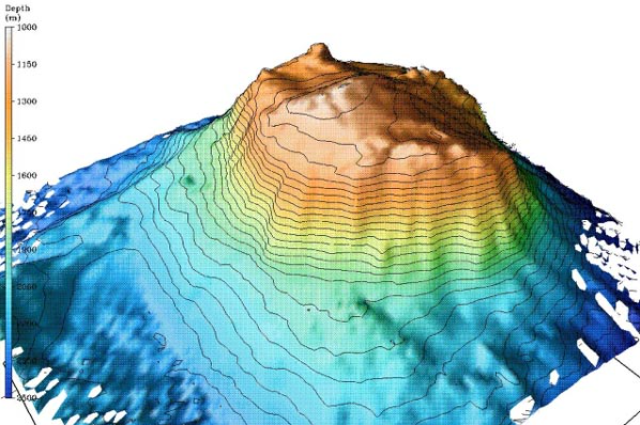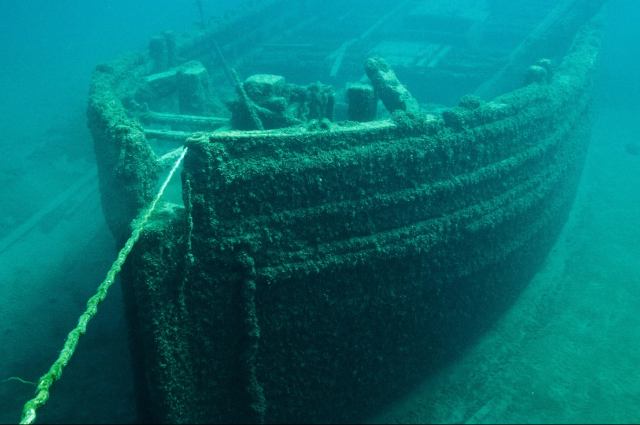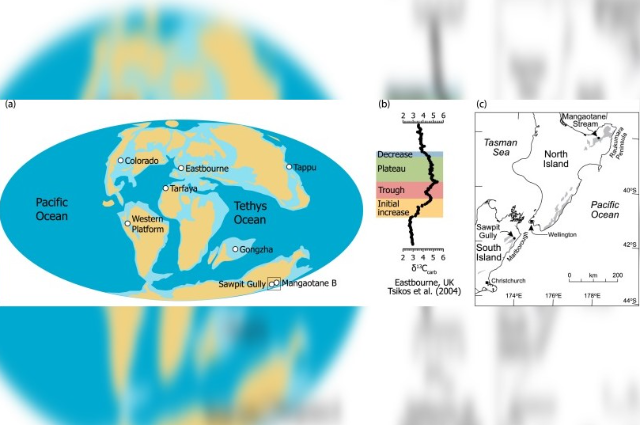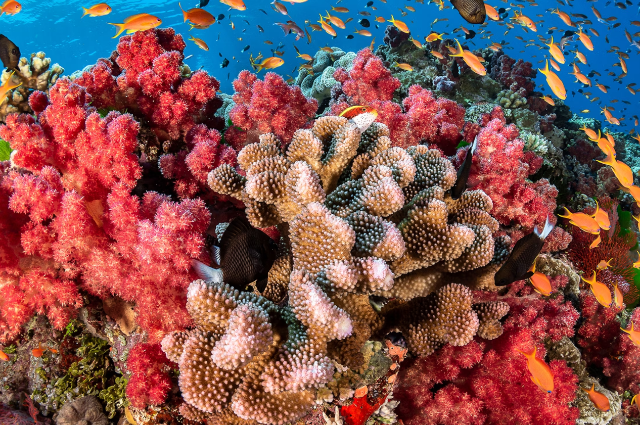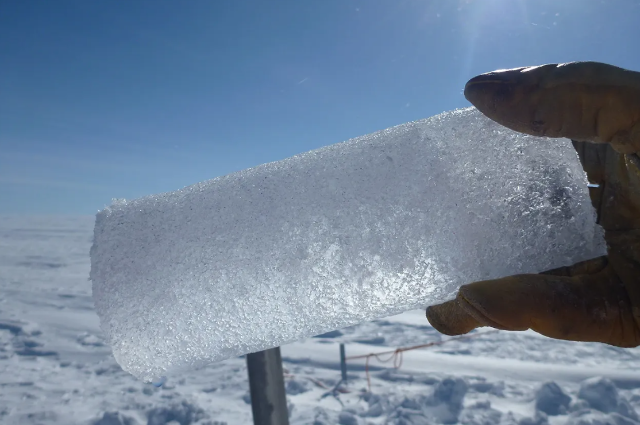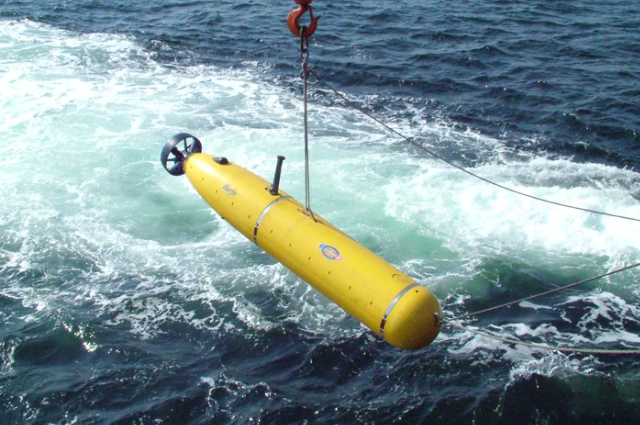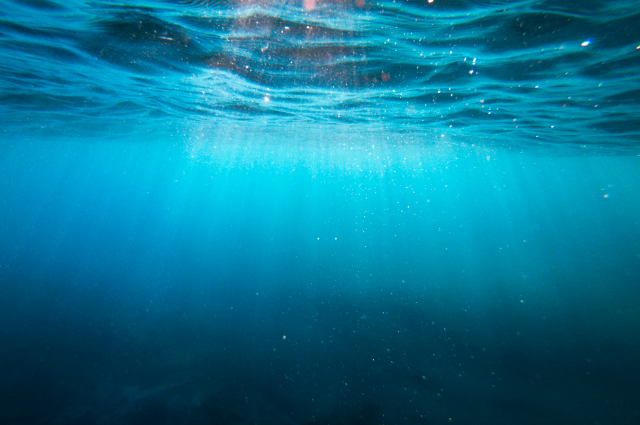
Photo by Cristian Palmer on Unsplash
Can you imagine a world submerged in eternal twilight, where the immense pressure is enough to crush bone and the idea of sunlight is just a distant memory? This is the underwater domain, a vast and enigmatic ocean that envelops over 70% of our planet. Despite its prevalence, this aquatic world is largely uncharted, a place of hidden depths and elusive figures that fuel both scientific fascination and the whispers of myths. This article explores some of the most captivating mysteries concealed within this underwater world, delving into unexplained sounds that echo from the abyss, the potential existence of colossal, unknown creatures, and the bioluminescent marvels that illuminate the inky blackness.
Unexplained Sounds
The depths of the sea are alive with a chorus of sounds that are both recognizable and mysterious. The Bloop stands out as one of the most intriguing enigmas, a sound so potent and distinct that it seized global interest in 1997. Captured by the U.S. National Oceanic and Atmospheric Administration’s (NOAA) subaquatic audio network, the Bloop was a sound of ultra-low frequency that was unprecedented in the records. It dwarfed the acoustic emissions of even the mightiest whales in sheer power.
The origin of the Bloop initially triggered wild conjecture. Hypotheses varied from the prosaic, like subsea volcanic eruptions or a massive vessel’s mishap, to the extraordinary, including the possibility of an immense, unknown marine entity. Nonetheless, after scrutinizing the acoustic patterns and their spread over great expanses, researchers ultimately pinpointed the probable cause to be an icequake.
An icequake, also known as a cryoseism or frost quake, occurs when frozen soil or rock saturated with water or ice suddenly cracks. As water drains into the ground and freezes, stress builds up until it’s explosively released, causing tremors, vibrations, and booming sounds. These events are most common in cold regions with permafrost, the permanently frozen ground beneath the Earth's surface. Interestingly, icequakes can sometimes be triggered by human activity, such as the rapid withdrawal of water from reservoirs for hydroelectric power generation.
Deep Sea Giants
The immense pressure, perpetual darkness, and frigid temperatures of the deep sea create an environment unlike any other on Earth. Yet, life not only survives in these harsh conditions, but thrives in forms often exceeding their shallow-water counterparts – a phenomenon known as deep-sea gigantism. This section will delve into the fascinating world of these colossal denizens of the abyss, exploring the science behind their size, the lingering myths, and the exciting possibilities for undiscovered giants.
Giants Among Us: Confirmed Denizens of the Deep
The existence of deep-sea giants is no longer a myth. Here are some remarkable examples:
Colossal Squid (Mesonychoteuthis hamiltoni):
This elusive cephalopod is estimated to reach lengths of up to 14 meters (46 ft), making it the largest invertebrate ever discovered. Despite its formidable size, the colossal squid faces an array of predators, including sperm whales, large fish, and even birds. Capturing live specimens remains a challenge, with the first one caught only in 2005.
Giant Isopod (Bathynomus giganteus):
Giant isopods are peculiar marine creatures that inhabit the deep ocean floor. Resembling oversized pill bugs, they can grow up to an impressive 76 centimeters (30 inches) in length. These scavengers thrive in the cold, dark depths, where they feed on decaying organic matter that sinks from the surface. Their tough exoskeletons provide protection against the harsh environment, and their slow-moving, deliberate movements allow them to conserve energy in the nutrient-poor abyssal regions.
Japanese Spider Crab (Macrocheira kaempferi):
The Japanese spider crab (Macrocheira kaempferi) is a remarkable marine crab found exclusively in the waters around Japan. It holds the distinction of having the largest leg span of any arthropod in the world, reaching an impressive 3.7 meters (12.1 feet) from claw to claw. These colossal crabs can weigh up to 19 kilograms (42 pounds), making them second in mass only to the American lobster among all living arthropod species.
Giant Oarfish (Regalecus glesne):
The Giant Oarfish (Regalecus glesne) is a fascinating creature, holding the title of the world's longest bony fish. With a ribbon-like body reaching up to 17 meters (56 feet) in length, it inhabits temperate and tropical oceans worldwide. Despite its impressive size, this gentle giant feeds on plankton and small jellyfish, filtering them from the water with its tiny teeth.
Leatherback Sea Turtle (Dermochelys coriacea):
The largest living turtle, the Leatherback Sea Turtle is a true wanderer. Their wingspan can exceed 8 feet, and they undertake massive migrations across the oceans. Unlike other sea turtles, they have a leathery carapace instead of a hard shell, and they feed primarily on jellyfish.
Beyond the Sunlit Depths: The Ocean's Hidden Wonders
Mariana Trench:
Plunging a staggering 11 kilometers (7 miles) into the Earth's crust, the Mariana Trench is the deepest point on our planet. This colossal scar is a testament to the power of plate tectonics, formed where two plates converge and one gets subducted beneath the other. The extreme pressure at these depths creates a uniquely hostile environment, yet some remarkable lifeforms, like the bizarre faceless fish, have adapted to call it home.
Mid-Ocean Ridges:
Snaking through the world's oceans for over 80,000 kilometers (50,000 miles) are the Mid-Ocean Ridges, the longest mountain range on Earth. Formed by the continuous upwelling of molten rock from the Earth's mantle, these underwater mountains are a hotspot for volcanic activity and hydrothermal vents, creating vibrant ecosystems teeming with chemosynthetic life.
Hydrothermal Vent:
Vents spewing superheated, mineral-rich water from the Earth's crust create oases of life in the otherwise barren deep sea. Chemosynthetic bacteria thrive around these vents, forming the base of a unique food chain that supports a variety of creatures like giant tube worms and bizarre vent mussels. These vents not only reveal clues about the origins of life on Earth but also suggest the possibility of life on other planets with similar hydrothermal activity.
Abyssal Plains:
Covering most of the ocean floor, the abyssal plains are vast, featureless stretches of sediment. These seemingly desolate landscapes are teeming with microscopic life, forming the foundation of the deep-sea food web. Decomposed organic material from the surface rain down on the abyssal plains, feeding detritivores like sea cucumbers and starfish that have adapted to survive in the perpetual darkness and cold.
Seamounts:
Rising from the ocean floor like solitary peaks, seamounts are underwater mountains of volcanic origin. These isolated islands provide critical habitat for a variety of marine life, acting as stepping stones for migration and promoting biodiversity. Fish, deep-sea corals, and marine mammals all rely on seamounts for food, shelter, and breeding grounds, making them vital components of the ocean ecosystem.
Unlocking Earth's History in the Ocean's Embrace
The ocean floor isn't just a landscape of rock and sediment; it's a vast library holding the key to understanding our planet's past. From shipwrecks frozen in time to fossilized creatures long gone, the ocean meticulously preserves history in its depths. Let's delve into some of the ways the ocean whispers secrets of our planet's story.
Sunken Cities and Shipwrecks:
Scattered across the ocean floor lie the remnants of bygone eras – sunken cities and shipwrecks. These underwater tombs offer a glimpse into past civilizations, their technology, and their way of life. Through archaeological exploration and meticulous excavation, these submerged time capsules reveal details about trade routes, cultural practices, and even the daily lives of people who lived millennia ago.
Oceanic Anoxic Events:
Hidden within the ocean floor are layers of sediment that tell a chilling story about past environmental catastrophes. These layers, rich in organic matter but devoid of oxygen-loving organisms, mark periods known as Oceanic Anoxic Events (OAEs). These events, triggered by various factors like volcanic eruptions, caused widespread ocean deoxygenation, leading to mass extinctions of marine life. Studying OAEs provides valuable insights into potential consequences of climate change and helps us understand the resilience of life on Earth.
Coral Reefs:
Coral reefs are not just vibrant ecosystems; they're also natural recorders of climate change. The growth layers of coral skeletons store information about past ocean temperatures and acidity. By studying these layers, scientists can reconstruct historical climate patterns and track changes in ocean conditions over vast stretches of time. This information helps us understand the impact of human activity on the environment and predict future climate scenarios.
Microbial Fossils:
Microscopic fossils trapped in ocean sediments whisper stories of the earliest life forms on Earth. Through advanced techniques like microfossil analysis, scientists can identify ancient bacteria and other single-celled organisms, piecing together the timeline of early evolution. These tiny fossils offer invaluable clues about the origin of life on our planet and the conditions that fostered its development.
Deep-Sea Ice Cores:
Nestled beneath the polar ice sheets and buried in ocean sediments lie deep-sea ice cores. These cores contain layers of ancient seawater trapped for millions of years. By analyzing the trapped air bubbles and chemical signatures, scientists can reconstruct past atmospheric conditions and ocean circulation patterns. This information provides valuable insights into past climate changes and helps us predict future trends.
Silent Rivers of the Deep
The vast expanse of the ocean may seem still and serene, but beneath the surface, powerful currents flow like invisible rivers. These silent forces, sometimes reaching speeds of several knots, play a critical role in shaping the ocean's environment, influencing everything from the distribution of nutrients to the migration patterns of marine life. Imagine these currents not just as slow, meandering streams, but as dynamic conveyor belts, some even acting like underwater waterfalls plunging down continental shelves!
Ocean's Arteries:
Underwater currents are driven by a combination of factors like wind, temperature differences, and salinity variations. These currents act as the ocean's circulatory system, transporting nutrients, heat, and oxygen across vast distances.
Life on the Move:
Marine life utilizes currents for navigation and migration. Plankton drifts with the currents, forming the base of the marine food web. Fish, whales, and even sea turtles utilize currents to travel vast distances, following nutrient-rich streams and ideal breeding grounds.
Cradle of Biodiversity:
The movement of currents shapes unique ecosystems. Upwelling currents bring nutrient-rich deep water to the surface, fueling the growth of phytoplankton and promoting vibrant marine life. Conversely, downwelling currents carry organic material to the ocean floor, sustaining deep-sea communities.
Mapping the Invisible:
Studying Ocean currents is a complex task. Scientists use a combination of buoys, satellites, and sophisticated underwater instruments to track current patterns and measure their strength and direction.
Climate Connection:
Ocean currents play a vital role in regulating Earth's climate. They transport heat from the equator towards the poles, influencing global weather patterns. Understanding these currents is crucial for predicting climate change and its impact on our planet.
The Future of Ocean Exploration
The vast expanse of the ocean, covering over 70% of our planet, remains largely unexplored. While surface exploration has yielded a wealth of knowledge, the mysteries of the deep sea continue to beckon. The future of ocean exploration promises exciting advancements in technology, paving the way for a new era of discovery.
Rise of the Machines:
Autonomous Underwater Vehicles (AUVs) and Remotely Operated Vehicles (ROVs) will play a major role. These tireless machines can map vast areas, collect data, and withstand immense pressure, venturing deeper and braving harsher conditions than ever before.
Deeper Dives:
Advancements in submersible design will allow humans to reach the final frontiers of the ocean. Imagine exploring the Mariana Trench, the deepest point on Earth, or venturing into hydrothermal vent ecosystems.
Enhanced Data Collection:
New sensor technology will gather more comprehensive data on the ocean environment. Imagine real-time chemical analysis, high-resolution imaging, and advanced acoustic mapping, all painting a detailed picture of the deep sea.
Unlocking Mysteries:
These advancements promise exciting discoveries. We could find new lifeforms adapted to extreme environments, uncover clues about past climates trapped in the ocean floor, or even locate shipwrecks and lost civilizations.
Sustainable Exploration:
The focus will be on responsible and sustainable exploration.
Technologies like low-impact vehicles and improved battery life will minimize our footprint on the delicate ocean ecosystems.
Conclusion
The ocean depths hold a captivating allure, a vast and mysterious realm where sunlight barely penetrates and strange creatures lurk in the shadows. Our exploration of this underwater world is still in its infancy, leaving countless mysteries waiting to be unravelled. From the colossal creatures glimpsed in the abyss to the whispers of ancient history trapped in the ocean floor, the potential for groundbreaking discoveries is immense. As we continue to develop new technologies and delve deeper into the unknown, the hidden wonders of the underwater world promise to not only reshape our understanding of Earth's past but also illuminate the possibilities for life beyond our planet. The ocean's mysteries continue to beckon, urging us to explore, innovate, and unlock the secrets that lie hidden beneath the waves.

